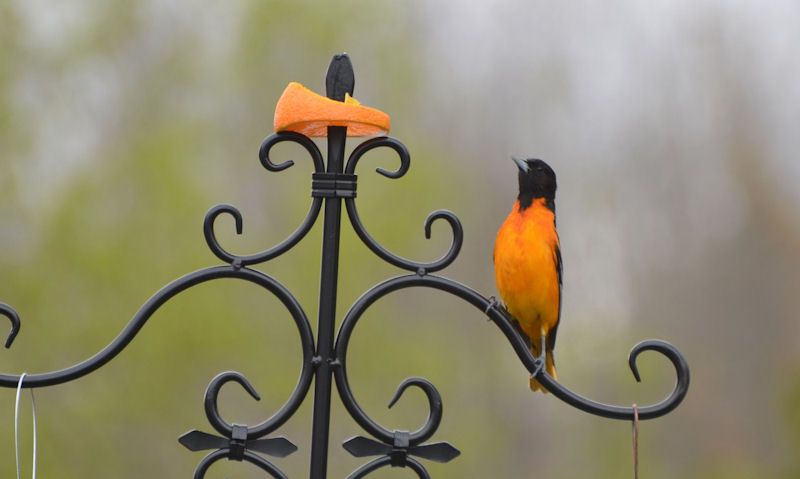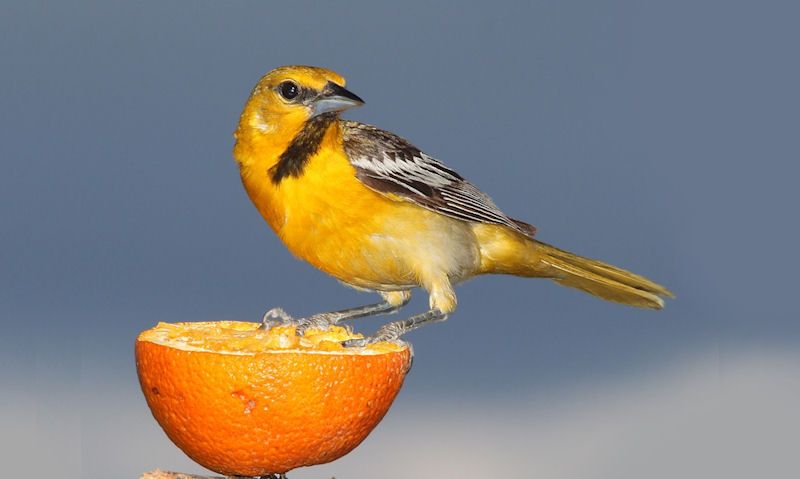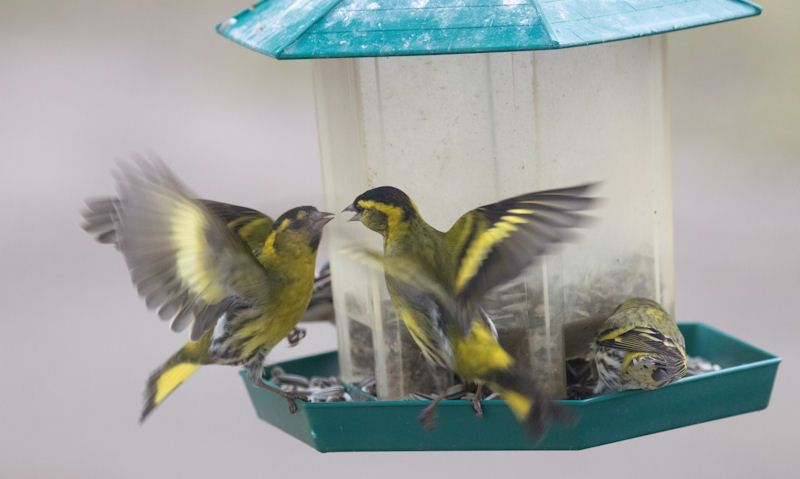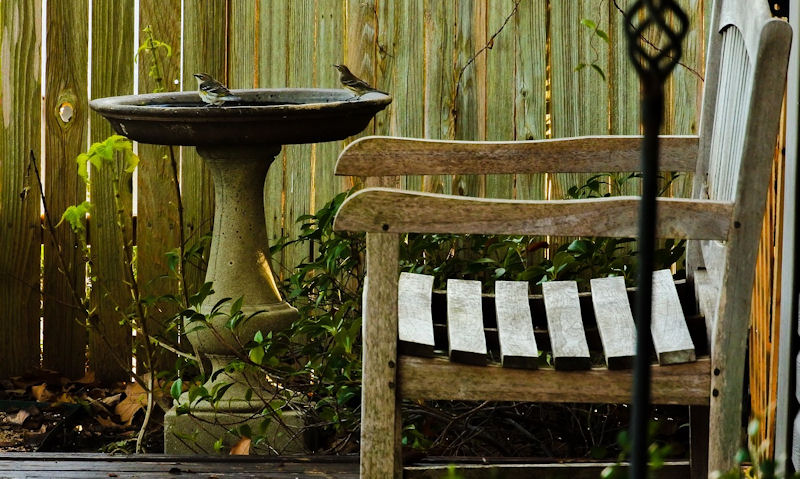Can wild birds eat oranges
Getting a common British bird to eat an orange from your garden is challenging but not impossible, but should be tried to get there energy up.
Wild birds can eat oranges as it offers huge health benefits to them with no harmful side-effects. To be honest, its tough getting birds to eat any citrus fruit let alone an orange, but when they do they will prefer the soft, juicy centre. Orioles have been pictured eating oranges, so who knows what will happen.
As the benefits outdo the negatives in regards to getting a wild bird to take a bite, its absolutely worth every effect just to get the healthy nutrition's contained within.
If a bird does eat an orange they will eat from the soft wedges or pods, otherwise known as the endocarp - the part we humans prefer to eat.
With that in mind, they are unlikely to eat the tougher wall of the orange or even more unlikely to eat orange peel.
To feed oranges to a wild bird, cut it in half down the middle and impale it onto a spike, railing or pole, and allow them to eat it as they wish... if ever they do that it.
Never feed oranges in traditional hanging bird feeders; sitting the halves under a bird table is fine, but on the ground or up on a wall is better.
Benefits of oranges to wild birds
Oranges offer valuable vitamins to humans, which also benefits wild birds in the garden, with a small quantity of fibre and calories.
Well an orange a day will keep heart deceases away for us, for birds it helps store up energy they can use through the day.
Well the oranges most beneficial national value is vitamin C, it will have however small, a role in the birds health.
How they eat it
If you manage to get a wild bird in your garden to feed on a orange, firstly, congratulations; like kids, its tough to get common British garden birds to eat there fruit.
If they do tackle an orange, it would have to be quite a mellow, non sour one, where they will eat from the soft, fleshy middle, also called endocarp.
The endocarp is the part we enjoy the most, well birds will avoid the white walls and outer albedo.
Primarily goal of a wild bird is to feed from the flesh or sip on the orange juice only.
Birds attracted to oranges

Its really tough to get a common garden bird to feed from an orange, and well most won't you just might get a few nibbles from one or two.
Often photographed eating an orange is a Golden Oriole (pictured) well they're like to eat the orange in slices, impaled onto the feeding pole.
And well we can't say for certain the Tits, Robins, Sparrows or Wrens will eat an orange, they certainly might give it ago to build up energy.
Orange slices
When feeding an orange to wild birds, its recommended you slice the orange just as you would slice up a tomato or cucumber for a sandwich.
So these 5mm or 6mm thick slices would make it easier for them to get at when laid out flat on the base of the bird table.
If sliced up from 1cm to 1.5mm, then impale the slice onto the feeding station pole, and allow them to tackle the slice that way.
Half or wedges
Take our advice for feeding apples to wild birds; cutting it in half only then its up to the wild birds to eat the orange how they want.
In half the juice is contained, well its likely to stay fresher for a longer period well out in the elements.
If using this option just lay it flat on the bird table, but don't impale it onto a pole or spike as you risk the juices running out from the peel.
Another option is orange wedges, just as we would cut up an orange for ourselves.
And well it might be worth trying, the shape of the now lighter wedge may result in it being pushed about the bird table, with birds unable to get a grip.
Do birds eat orange peels
Absolutely will oranges eat only the fleshy, soft centre of an orange for sure, but do birds eat orange peel?
From what we can tell the few birds that will eat an orange will only eat or sip from the soft part people only enjoy.
Most British birds will find it incredibly difficult to eat the tough, leathery peel of an orange so would probably chose the soft centre over the hard skin.
If you wish throw a crow, raven or starling the peels to see if they're interested. If they're not, chances are you won't get the smaller garden birds to eat it either.
Presenting an whole orange
As we've previously mentioned, common garden birds are highly unlikely to eat an orange, and for the ones that do they need quick access to the soft centre.
Presenting a whole orange is not a tempting proposition as it is, just this large, round not so good smelling orange skin, with no way to get to the middle.
If a bird does manage to break through the peel, remember this round ball will roll all over when not impaled on say an apple feeder or a spike.
Where to leave an orange
If you're interested in offering an orange to the birds that frequent your garden, you can do just that but don't insert it into any of the feeders.
An orange, regardless of how you present it to them, must be easily accessible where birds that don't usually eat off feeders can try too.
Instead, whether its in half, whole, a wedge or slice, impale it onto a spike, railing or a purpose made bird fruit feeder such as one you can use for apples.
Summary
Don't be afraid to experiment by feeding an orange to wild birds, it not a harmful fruit to feed birds in anyway, but instead awonderful source of vitamins and fibre.
We would recommend you cut the orange in half and impale one half on a spike or feeding station pole, well the other half can be placed under the bird table.
Its also possible to just rest it on the ground or leave it on a suitable wall or fence post, preferably near the current hanging bird feeders.
There's absolutely no reason to peel the orange for birds, as the peeling will create the perfect solid base to eat from, well also retaining the juices.


